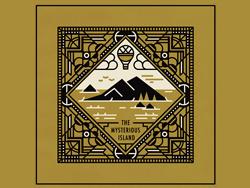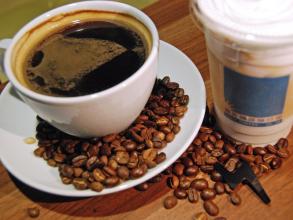Introduction to the characteristics of fine coffee in the producing area of Ugandan coffee flavor
Java (Java), refers to Java Island, belongs to Indonesia, is the country's fourth largest island, the capital Jakarta is located in Java Island northwest coast. Java is also the name of a computer language that is known for its Java coffee, and its icon for steaming Java coffee.
Java coffee beans early years of Java coffee fame, here refers to the former Java produced Arabica coffee. It has a rich aroma, low acidity, smooth taste, and with mocha coffee, the result is "Java mocha mixed coffee" once popular, synonymous with top coffee, fame spread.
Java coffee sold to Europe at that time was a very special coffee. Because it was shipped to European and American countries by sailboat at that time, the journey was long and the speed was slow, so it took a lot of time on the way. Coffee in this case, as if after a special fermentation, taste very unique.
Later, when ships replaced sailboats, people drank fresher coffee beans because of shorter delivery times. But people accustomed to old beans are not used to this fresh taste, so they desperately pursue old Java coffee, so that the Indonesian government and some businessmen deliberately store fresh beans in warehouses for one to two years before selling them to consumers. In fact, the acidity of aged Java beans is reduced to nearly zero compared to fresh beans, while the aroma is more intense. Because of the long storage time, the cost increases a lot, and the quantity is limited, so aged Java has always been a hot commodity in the coffee market. In the 1880s, some traders deliberately tampered with fresh Guatemala or Venezuela beans to copy old Java and sell them at high prices. What is intolerable is that 0 traders dye coffee beans in a way that makes them look more like aged java, but there is no doubt that the dyeing chemicals are poisonous.
Java produces only a small number of arabica beans, most of which are Romstar beans imported from Africa after the rust disaster. This coffee has a strong bitter taste after roasting, but the aroma is extremely light. Although the acidity is relatively low and the taste is relatively delicate, it is rarely used for direct drinking. It is often used to blend mixed coffee, or to make instant coffee. Mbale in Mount Elgon on the east and other producing areas near the border with the Democratic Republic of Congo on the west are known as Wugar. Officially listed grades are Oaganic (organic), Bugisu AA, Bugisu A, Bugisu B, Bugisu PB, Wugar, Drugar and others not listed. To find good Ugandan coffee, you must first identify Bugisu AA, A and PB grades, but because the country is landlocked and has many transportation problems, you will often find green beans with low moisture content and no green appearance. However, Ugandan coffee is not a coffee type that emphasizes rising aroma. As long as the raw beans are not turned white or yellow, they can generally have good flavor performance in the producing area. They have a low ripe fruit aroma, such as the taste of red wine, and a thick body. They are similar to some Kenya beans with low flavor tone, but they will also have a mild soil flavor. Therefore, they are quite different from other producing countries in East Africa in flavor characteristics. It's a little bit like Asian Indonesian Sulawesi Tornaga coffee and Java Manor coffee. Baking degrees between City+ and Full City+ are all better

Important Notice :
前街咖啡 FrontStreet Coffee has moved to new addredd:
FrontStreet Coffee Address: 315,Donghua East Road,GuangZhou
Tel:020 38364473
- Prev

Introduction to the characteristic manor of Ecuadorian coffee flavor varieties with mild taste
West coast: including coastal plains and foothills, high in the east and low in the west, generally below 200 meters above sea level, with some hills and low mountains at an altitude of 600 to 700 meters. Belongs to the tropical rain forest climate, the southernmost end begins to transition to the savanna climate. The average annual precipitation decreases from more than 3000 mm to about 500mm from north to south. The names of the provinces are as follows: Piccha, Asuai, Boliwal, Kania.
- Next

Burundian Coffee with strong aromatic Flavor and Taste. Introduction to the characteristics of boutique coffee beans in the manor area.
Formerly known as Urundi, Burundi formed a feudal kingdom in the 16th century. Since the middle of the 19th century, the forces of Britain, Germany and Belgium invaded. The long-ruled monarchy, which was conquered by Germany in 1890, listed it as the territory of German East Africa and fell under the control of the Belgian army in 1916. After World War I, the League of Nations merged Rwanda-
Related
- Detailed explanation of Jadeite planting Land in Panamanian Jadeite Manor introduction to the grading system of Jadeite competitive bidding, Red bid, Green bid and Rose Summer
- Story of Coffee planting in Brenka region of Costa Rica Stonehenge Manor anaerobic heavy honey treatment of flavor mouth
- What's on the barrel of Blue Mountain Coffee beans?
- Can American coffee also pull flowers? How to use hot American style to pull out a good-looking pattern?
- Can you make a cold extract with coffee beans? What is the right proportion for cold-extracted coffee formula?
- Indonesian PWN Gold Mandrine Coffee Origin Features Flavor How to Chong? Mandolin coffee is American.
- A brief introduction to the flavor characteristics of Brazilian yellow bourbon coffee beans
- What is the effect of different water quality on the flavor of cold-extracted coffee? What kind of water is best for brewing coffee?
- Why do you think of Rose Summer whenever you mention Panamanian coffee?
- Introduction to the characteristics of authentic blue mountain coffee bean producing areas? What is the CIB Coffee Authority in Jamaica?

